 8 min read
8 min read 4 Science Backed Methods Online Retailers Should Use to Encourage Impulse-Buying Behavior
 8 min read
8 min read Impulse-buying behavior has always been a good friend of online retailers. In 2016, unexpected spending made up to 40% of all the money spent on e-commerce in the U.S. With the beginning of the COVID-19 pandemic and rapid growth of online channels, this number increased to 50% in 2020. Combined with the fact that roughly 87% of all Americans admit to impulse-buying habits, we can see the extraordinary potential of unplanned shopping.
Retail has created hundreds of ways to encourage impulse-buying behavior, but only a tiny portion delivers results. To help you quickly determine which are most effective, we dug deeply into recent publications, case studies, and best practices. Here’s the list of four proven and data-supported techniques to boost unplanned shopping at your online store.
Impulse-Buying Behavior Figures
Impulse-buying behavior has been dramatically affected by the COVID-19 pandemic. Slickdeals research reports that the average monthly spending dropped from $450 in 2018 to $183 in 2020.
In 2021, while the U.S started to recover from the coronavirus, the average spending has increased by 50% to $276 a month. Not only has the overall recovery helped, but stimulus checks did their part. 43% of customers were willing to spend this extra money on unplanned goods.
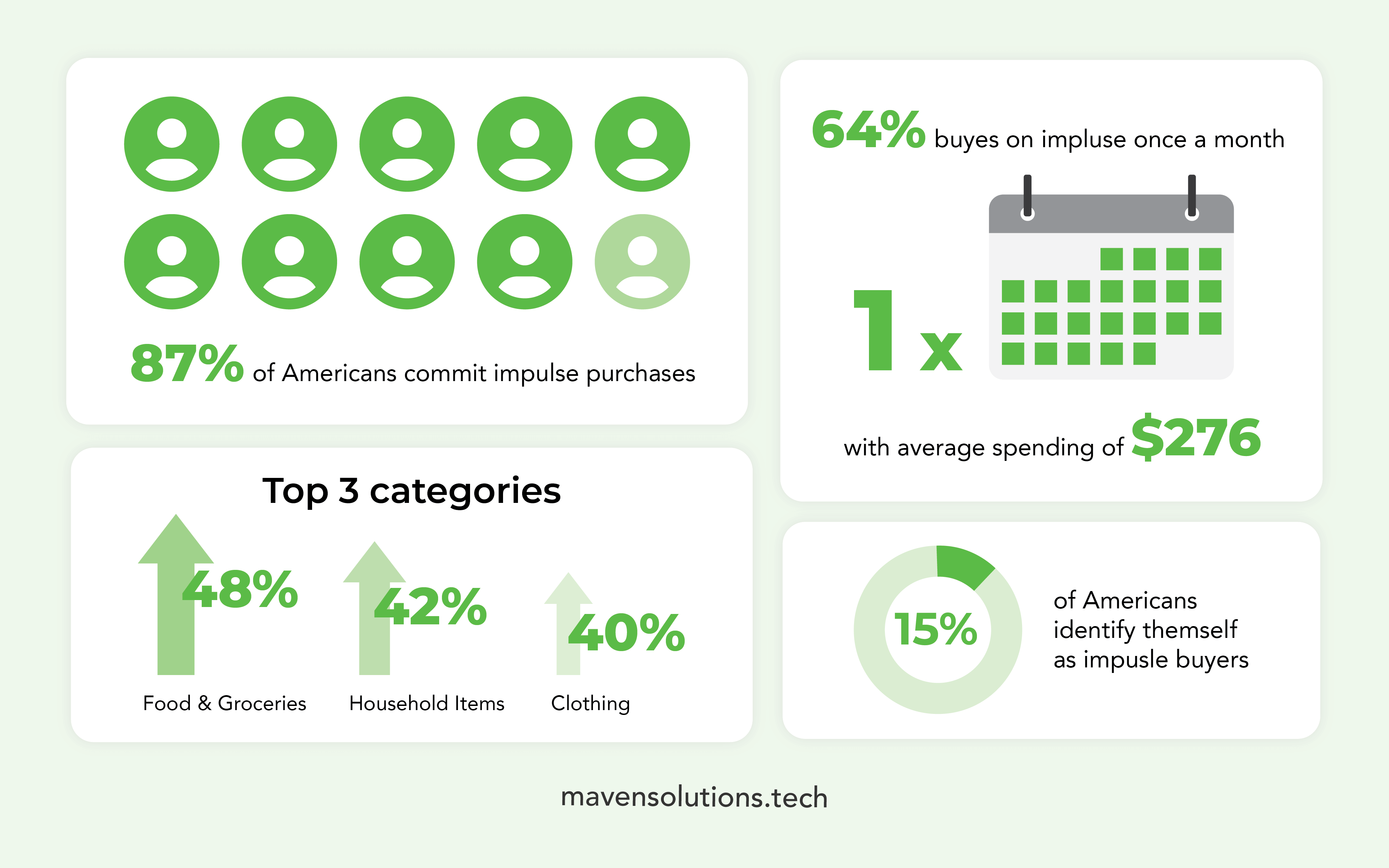
The frequency of impulse purchases has remained unchanged for years—64% of people buy on impulse once a month. So, on average, that’s 12 purchases per year. The top 3 categories in 2021 were: food and groceries (48%), household items (42%), and clothing (40%). The remaining products topping the list are coffee, toys, takeout, books, vehicles, and technologies.
Younger generations are more likely to buy spontaneously. According to Blis’s study of 2,000 Americans in 2022, people aged 25-34 are 53% more likely to make an impulse purchase than people aged 60+.
Finally, Blis says that only 15% of all customers identify as impulse buyers. This statistic is critical because it helps to understand that most people are not planning to be unplanned. They behave in a way that triggers dictates. So, let’s take a closer look into some of those triggers for online retailers.
Ways to Encourage Impulse Purchases
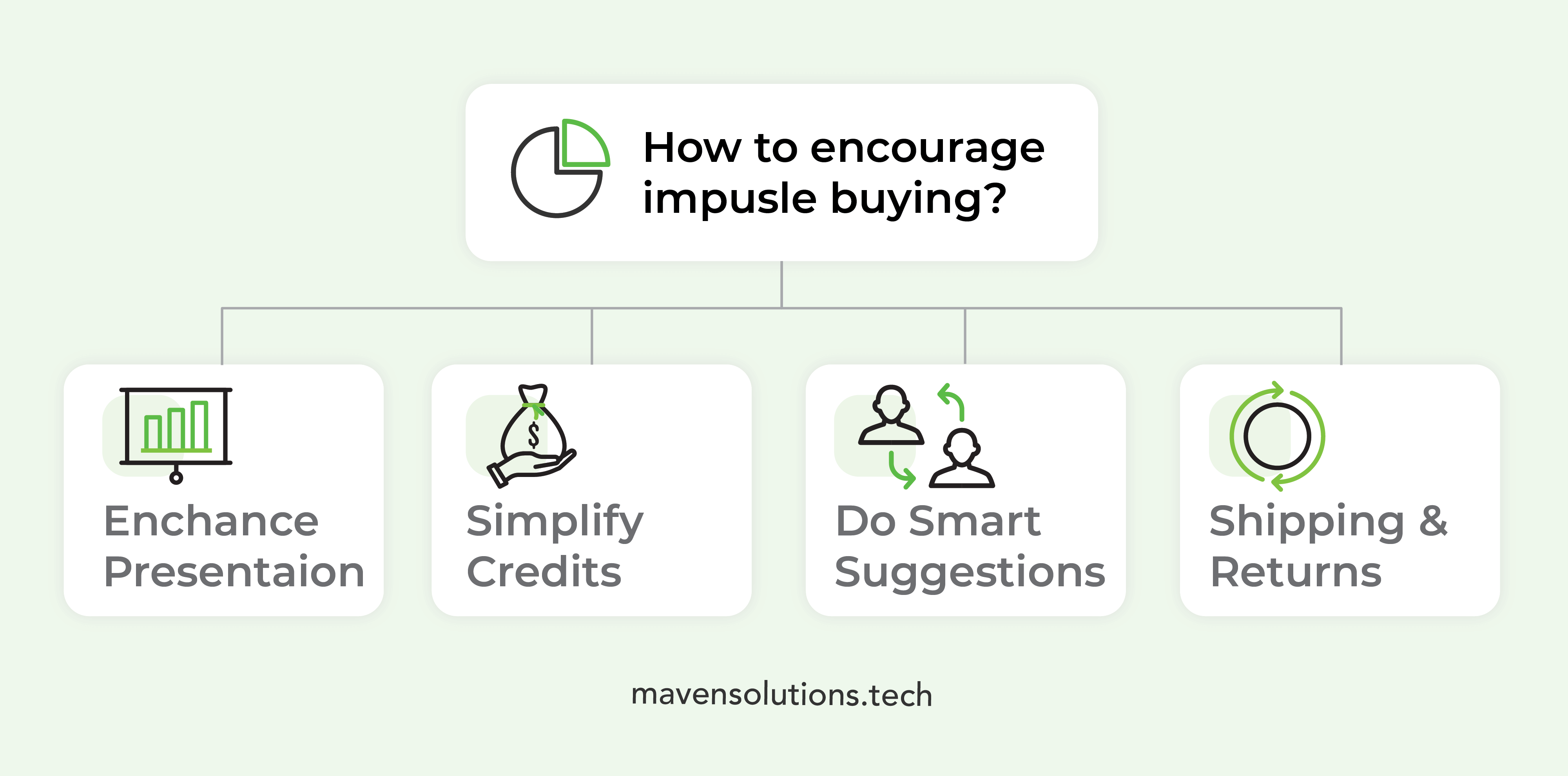
Enhance Product Presentation
To encourage impulse buying, implement a try-on feature on your website— it increases impulse-buying intention by 35% on average, compared to a static image or 360-view.
This result is supported by the “Role of Local Presence in Online Impulse Buying” study in 2017. Charlotte Vonkeman, with other co-authors, has researched how different types of product presentations affect participants’ perceptions of local presence. The sense of the local presence, in turn, influences the urge to buy impulsively.
Within the study, researchers took a Ray-Ban website and compared three types of product presentation: static picture, 360-degree view, and try-on feature.
The results showed that a static image and 360-degree view slightly increased the urgency to buy a pair of sunglasses; only around 30% of participants were affected. A try-on feature, in turn, had a much higher impact, compelling about 65% of participants to make the impulse purchase.
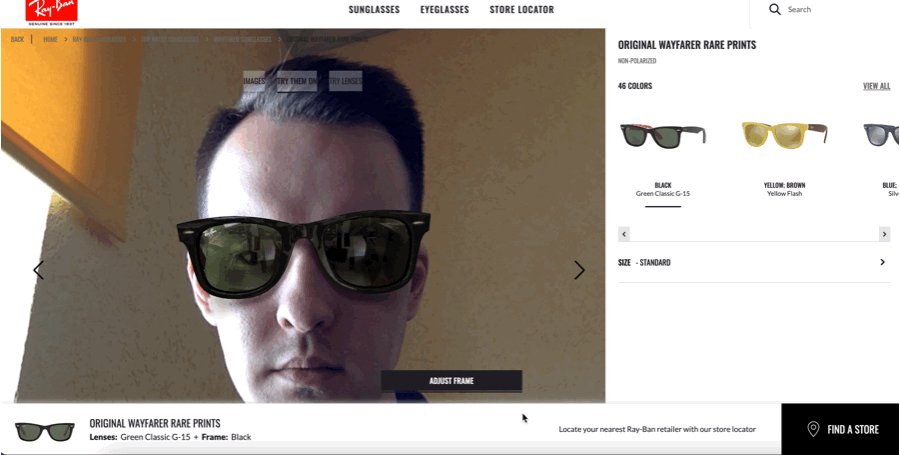 The takeaway framework from this study is the following:
The takeaway framework from this study is the following:
- Add high-quality static pictures. They still work.
- While growing and investing in product presentation, try to implement a try-on feature if possible. It will have a much higher impact and, therefore, higher ROI.
The study “Does Product Semantics Matter” (2021) uncovers that product semantics strongly impact unplanned shopping. In this case, product semantics is a combination of symbols attached to the core product to affect the psychological needs of online consumers.
While creating pictures, descriptions, and other attributes, make sure those are informative and include emotional triggers. For example, showing a sofa in the interior affects customers’ functional and psychological requirements.
Finally, to effectively manage product content, consider the implementation of a PIM (Product Information Management) system. PIM is a digital solution that automates data collection, enrichment, and upload. It helps streamline the process of content management and increases the efficiency of a team multiple times.
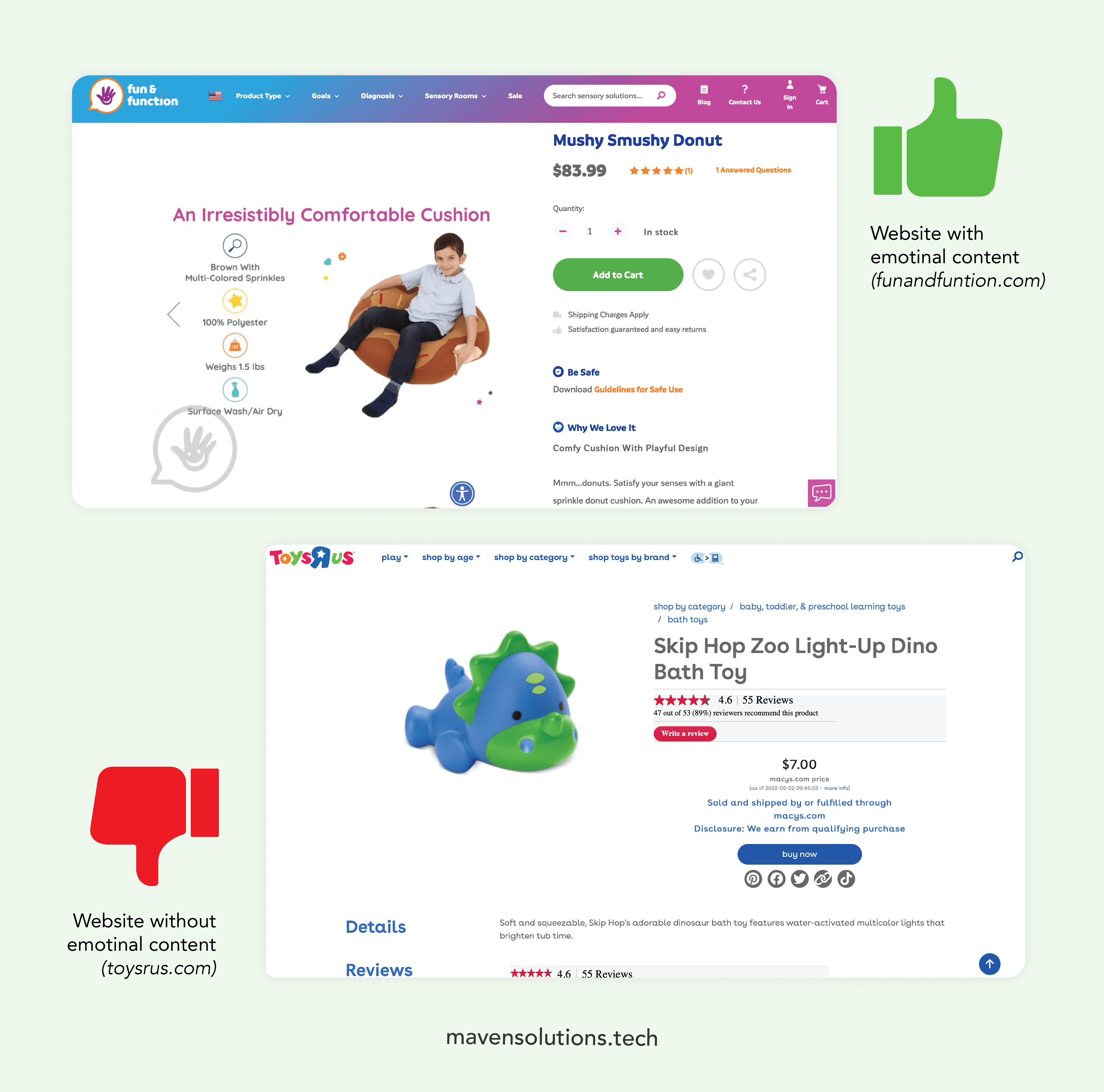
Simplify Credits
Сredit cards stimulate impulse buying. They allow customers to receive almost instant gratification and positively affect the speed of the decision-making process and the amount spent. The easier it is to pay, the more likely the customer is to make the purchase.
Buy Now Pay Later (BNPL) technology goes beyond credit cards. By the latest C+R research in 2021, more than 55% of BNPL users say they prefer the BNPL option over regular credit. Add this to the fact that 44% of customers report that they choose BNPL due to ease and convenience, and it becomes evident that BNPL is new must-have functionality to instantly drive sales.
To encourage impulse behavior, implement BNPL payments.
More critically, by not implementing BNPL, you are losing sales. A study completed by finder.com in the UK shows that around 16% of all Brits avoided buying from retailers who don’t offer a BNPL option at the checkout.
Finally, be aware that most BNPL users are millennials (30,3%) and Gen Z (36.8%). So, before considering BNPL analyze your audience. If most of your customers are Gen X or even Baby Boomers, the implementation of BNPL would have lower ROI because these age groups are less likely to take advantage of this new trendy tech.
Make Smart Recommendations
Retailers have been using recommendations forever. From brick-and-mortar, where customers buy unplanned goods from the rack beside the cashier, to e-commerce, where merchants have a “People also viewed” section at the bottom of the page.
As consumer behavior was changing during the COVID-19 pandemic, the approach to recommendations has also changed. The new industry standard is maximized personalization of customer experience both online and offline. This means smarter recommendations.
According to a paper from 2019, “Impulse Buying: Design Practices and Consumer Needs“, only 20% of the top 200 e-commerce websites in the US have personalized recommendations. Even if the percentage has grown over the years, the quality of these suggestions remains questionable.
The new approach to recommendation consists of two interconnected parts: customer data and continuous experiments.
It’s crucial to collect and analyze customer data. A tremendous help to this process could be through integration to the CRM (Customer Relationships Management) System. This software helps to administrate interactions with customers by analyzing a large amount of incoming data.
In other words, it automatically collects, explores, and learns the preferences of each customer on your website, which then results in personalized communication, recommendation, and support.
CRM not only works for customers but for prospects as well. By gaining insights into your existing buyer, you can learn the habits and patterns of different customer groups to optimize their experience by showing potential customers relevant content.
With CRM integrated, the remaining effort goes toward experiments. First, pay attention to what you recommend. The study by Dokyun Lee, “People Who Liked This Study Also Liked” has shown that it’s much more effective to show purchase-based recommendations than view-based recommendations.
The study revealed that people who got the recommendation with the title “People who purchased this item also purchased” ended up buying an item 7 times more often than those who got the section with the title “People who viewed this item also viewed”. People trust others’ choices and, therefore, are more likely to make impulse purchases.
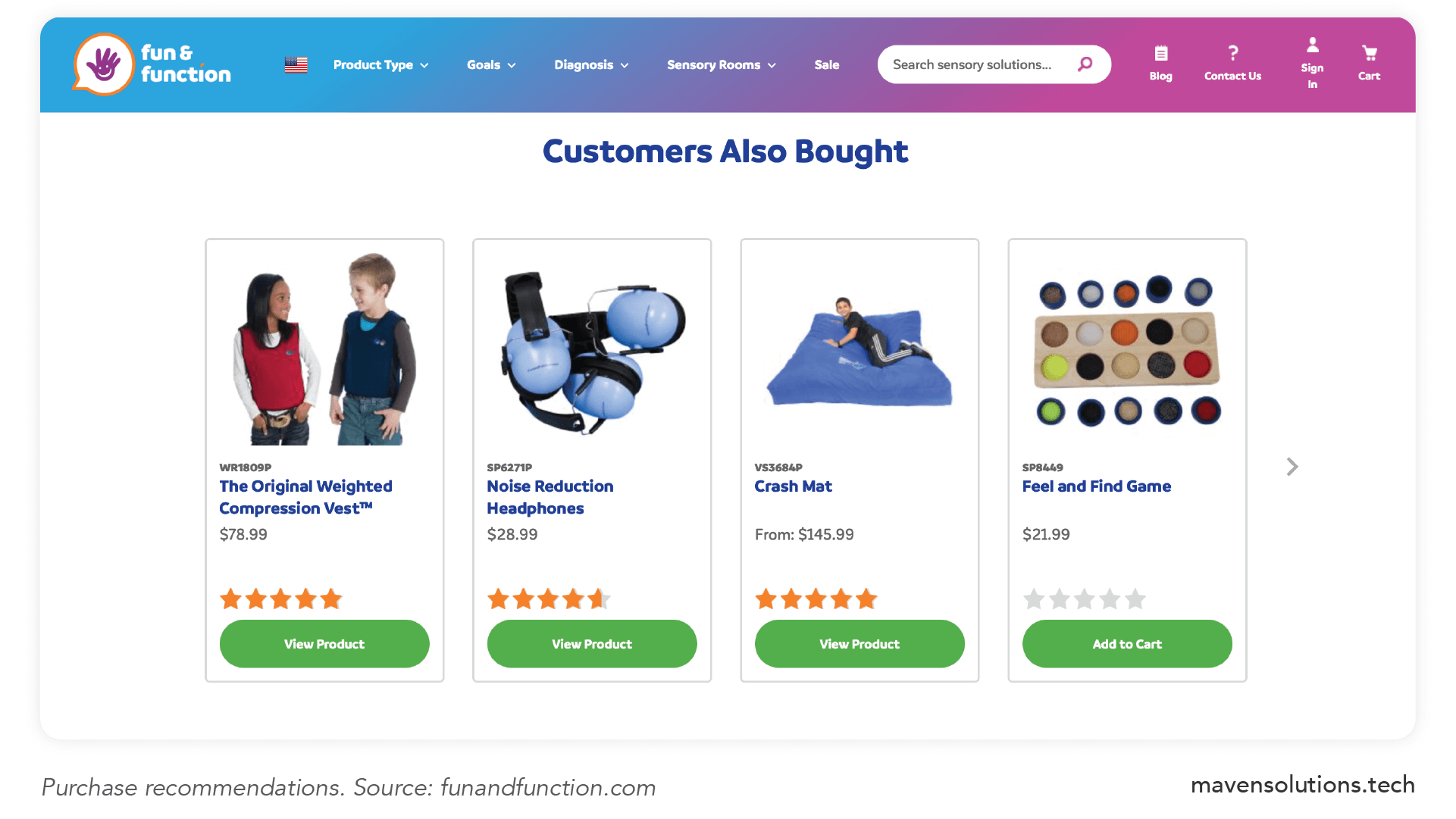
This study is a single data point, but it creates an idea for experimentation.
In addition, experiment where and when you show recommendations. According to the Clerk, recommendations shown during the checkout process have a considerable effect. In their investigation, offering customers personalized recommendations on a cart page resulted in approximately two more items in each cart.
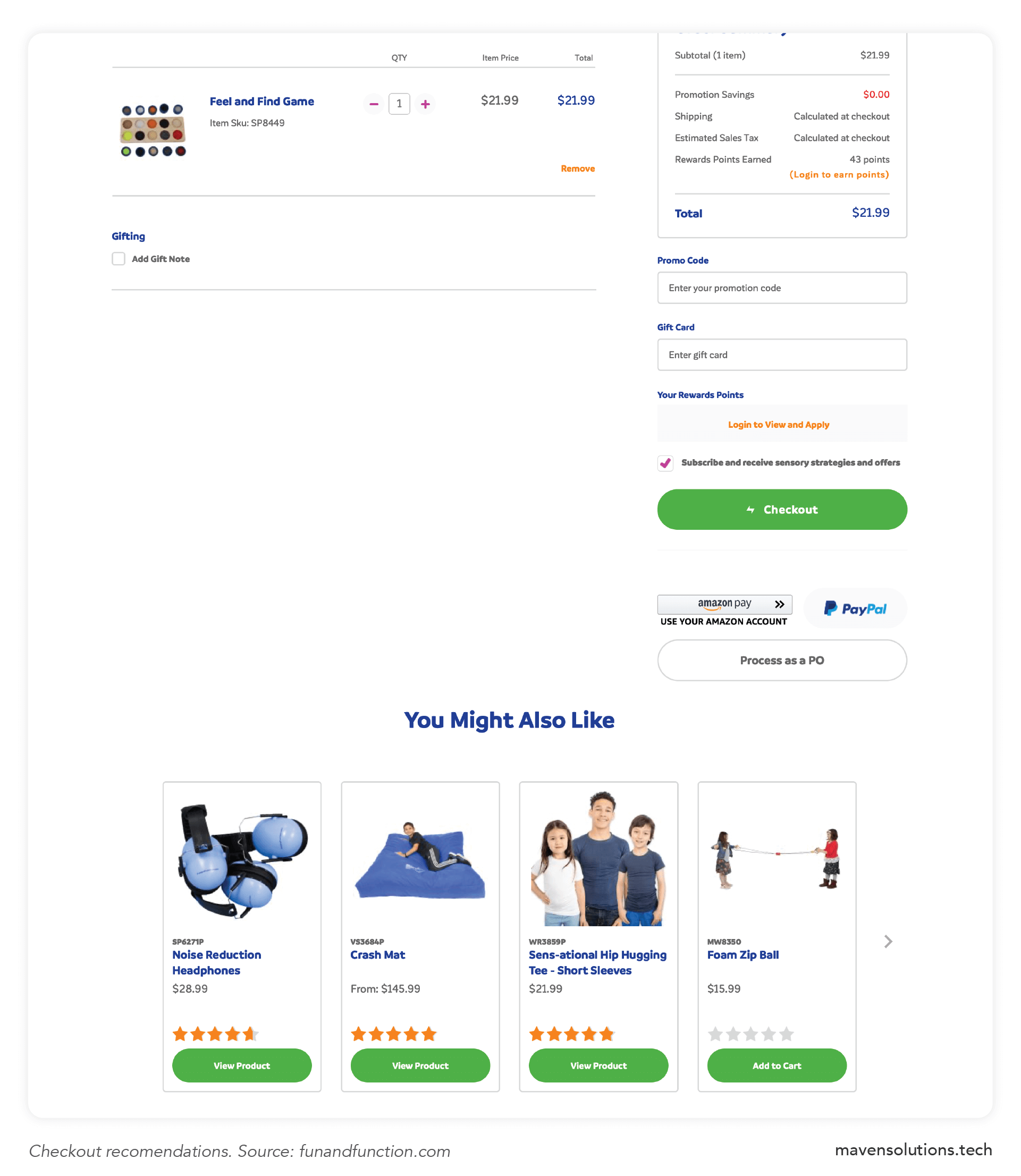
Work on Shipping and Return Policy
Impulse buying tends to make people happier. Finder.com, in their research in 2018, found that 62% of U.S. customers felt better after making an unplanned purchase. The other group, in turn, regretted their purchase.
This can happen because people are buying goods that they may not need. In many cases, this good end up in the garbage because it provided zero emotional ROI.
To help customers overcome their regret, implement an easy-to-follow return policy and free shipping.
Free shipping has an almost magical effect on customers’ behavior. 93% of customers prefer free shipping over discounts! Even more, Rakuten Insight in 2021 found that free shipping is among the top 3 factors that affect buying decisions. By offering free shipping you are allowing people to decide faster whether to buy a good or not.
The best practice is to establish a minimum amount that customers should spend to qualify for free shipping. The same research shows that 59% of people are willing to pay more to meet the minimum.
Returns could be even more powerful. They are a huge challenge for e-commerce. According to McKinsey, in 2021, online returns rose above 35% and hit a record. By providing a customer with an easy-to-follow return policy, you eliminate the consumer’s perceived risk of a mistake. It positively affects and minimizes the regret and encourages customers to engage with you even after the return.
To manage the process, an IMS (Inventory Management System) can be helpful. This solution helps automate stock work, simplify forecasting, and improve overall logistics efficiency.
To Sum Up
Impulse purchases represent a significant spending component in e-commerce. To encourage unplanned behavior, it’s essential to work in 3 directions: make all interaction and overall experience effortless, personalize the approach, and enhance the presentation.
While accomplishing everything at once is complex and cost-prohibitive, starting little by little is most effective. The most critical step is to be aware that all consumers are guilty of impulse purchases.
Maven has proven expertise in implementing PIM, CRM, or IMS systems into existing businesses. So, let’s review your current toolset for impulse buyers and take it to the next level to achieve more sales!







 8 min read
8 min read